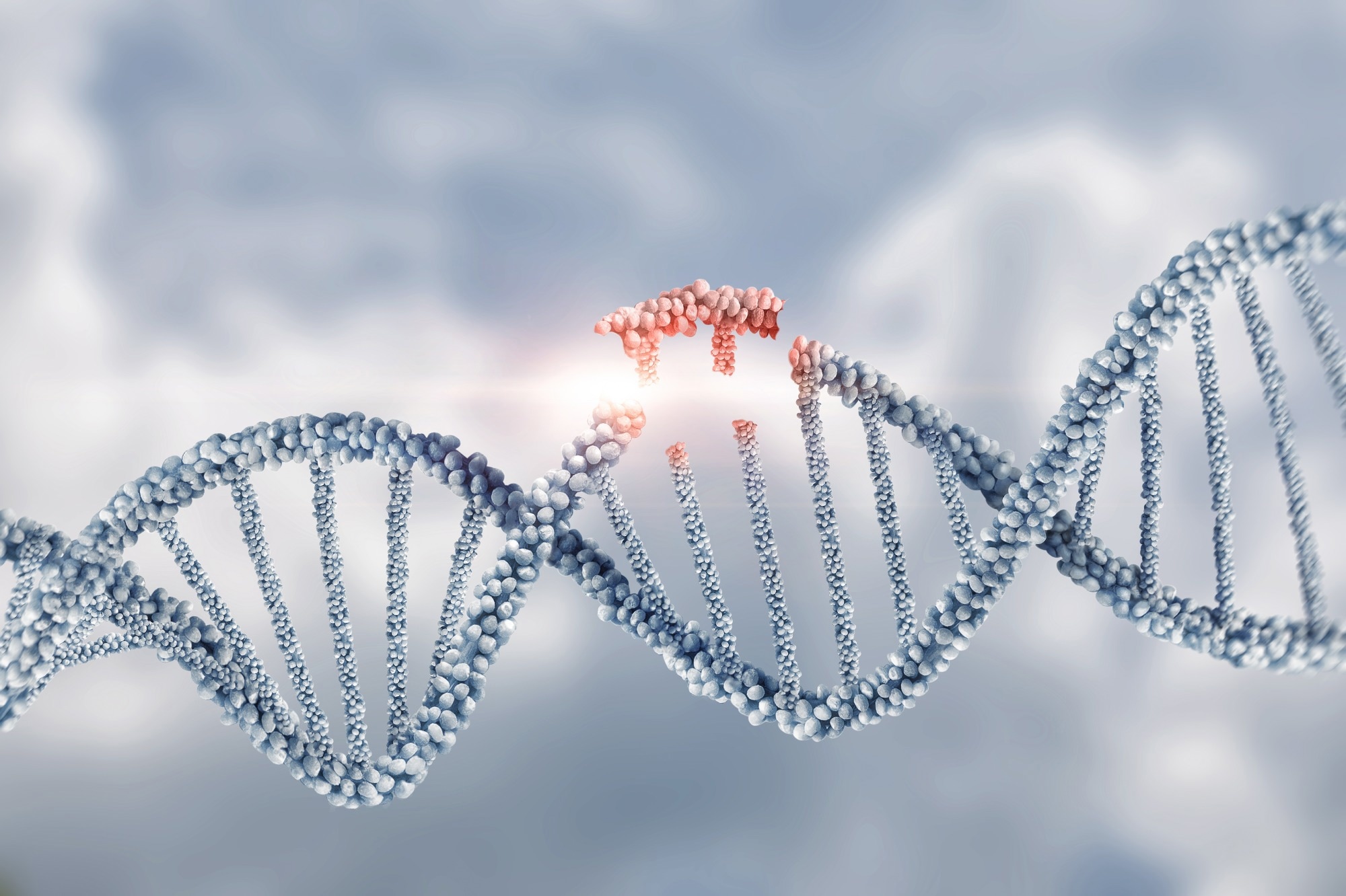Although chromatin modifications are known to play a critical role in regulating gene expression, the impact of specific chromatin modifications and their causal roles in transcription remains unclear.
In a recent study published in Nature Genetics, scientists developed an epigenome editing platform and a method to program nine major chromatin modifications and determine the magnitude of transcription response to each of these modifications using single-cell readouts.
 Study: Systematic epigenome editing captures the context-dependent instructive function of chromatin modifications. Image Credit: Natali _ Mis/Shutterstock.com
Study: Systematic epigenome editing captures the context-dependent instructive function of chromatin modifications. Image Credit: Natali _ Mis/Shutterstock.com
Background
A combination of transcription factors, epigenetic mechanisms such as chromatin modifications, and cis-regulatory elements regulates the transcription process in eukaryotic cells.
The epigenetic mechanisms largely consist of post-translational modifications to histones and deoxyribonucleic acid (DNA) and directly impact the chromatin's compaction. They also provide docking sites to which reader proteins can bind and regulate the access of transcription factors to cognate motifs.
Given the pivotal role of chromatin modifications in gene expression, it can be inferred that aberrations in chromatin modifications can cause the mis-expression of genes, which could have serious consequences.
Studies conducting genome-wide analyses of chromatin modifications in healthy and diseased cells have found that these modifications strongly correlate to transcription activity.
Some methylated histones are enriched at highly active gene promoters, while repression of transcription has been found to be correlated with demethylated histones. However, how these modifications play a direct causal role in the process remains unclear.
About the study
In the present study, the researchers developed epigenome editing tools to study the precise causal effects of chromatin modifications.
This modular epigenome editing platform allowed them to program specific chromatin modifications at targeted sites and then observe the quantitative and causal impacts of the modification through single-cell readouts.
An approach often taken in biological studies to understand causal or functional relationships involves perturbation strategies to manipulate specific elements and observe the causal effects.
However, these methods frequently impact the entire epigenome, making it difficult to differentiate between the direct and indirect impacts of the perturbations.
In comparison, the tools developed in the present study allowed the precise manipulation of targeted loci using specific chromatin modifications, providing an opportunity to observe these modifications' isolated, direct impacts.
Here, the researchers used a programmable fusion system involving the mutant dead Cas9 (dCas9) protein fused with the tail array from the general control transcription factor GCN4 motif to build the modular epigenome editing platform used for de novo programming of chromatin modifications at target sites.
Embryonic stem cells from mice were used to test whether the epigenome editing was successful, after which enrichment across target sites was assessed to determine the level and spread of the chromatin marks quantitatively.
A reporter system that allowed quantitative readouts from single cells was used to investigate how chromatin modifications directly influenced the regulation of gene expression.
The temporal dynamics of the changes in transcription that occurred after introducing the chromatin marks were also assessed.
Additionally, the study examined how various motifs in the DNA sequence influenced the impact of chromatin marks on transcription, as well as the interplay among and impact of combinations of chromatin modifications.
Results
The study found that installing a lysine four trimethylation on histone H3 (H3K4me3) in promoters results in the hierarchical modification of chromatin, which plays a direct role in transcription activation.
Despite previous studies involving loss-of-function experiments reporting that H3K4me3 was not essential for gene expression, the current study highlighted the direct causal role of H3K4me3 in transcription activation, potentially explaining why H3K4me3 has been evolutionarily conserved.
The study also found that while there was a dual-feedback association between transcription and H3K4me3 accumulation, with the process of transcription resulting in the accumulation of H3K4me3, which in turn kept activating transcription, the synthesis of H3K4me3 de novo could also trigger transcription activation.
However, transcription activation through de novo deposition of H3K4me3 also depends on the availability of transcription factors, and the study found that only about 35% of the silent genes undergo transcription activation from de novo H3K4me3 deposition.
Additionally, the researchers discovered that the variations in the DNA sequence interact with the chromatin modifications and influence not only the molecular outputs but also the subsequent phenotypic traits.
The results showed that underlying motifs of transcription factors interact with the chromatin modifications to tune the gene expression. Some histone modifications, such as H3K36me3 act like a switch when interacting with cis CTCF (CCCTC-binding factor) motif. This conserved zinc finger transcription factor is highly relevant to endogenous X-inactive specific transcript or Xist regulation.
Conclusions
To summarize, the study established the significance and utility of the modular epigenome editing platform in studying the causal roles and contextual impact of chromatin modifications.
The findings highlighted the influence of chromatin modifications on transcription and gene expression through precise chromatin modifications at various target sites.
Also, they showed that quantitative responses to these epigenome changes are modulated and calibrated through contextual interactions with transcription factors and DNA sequence variations.